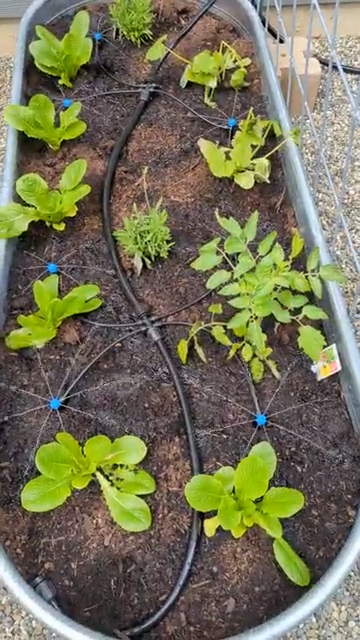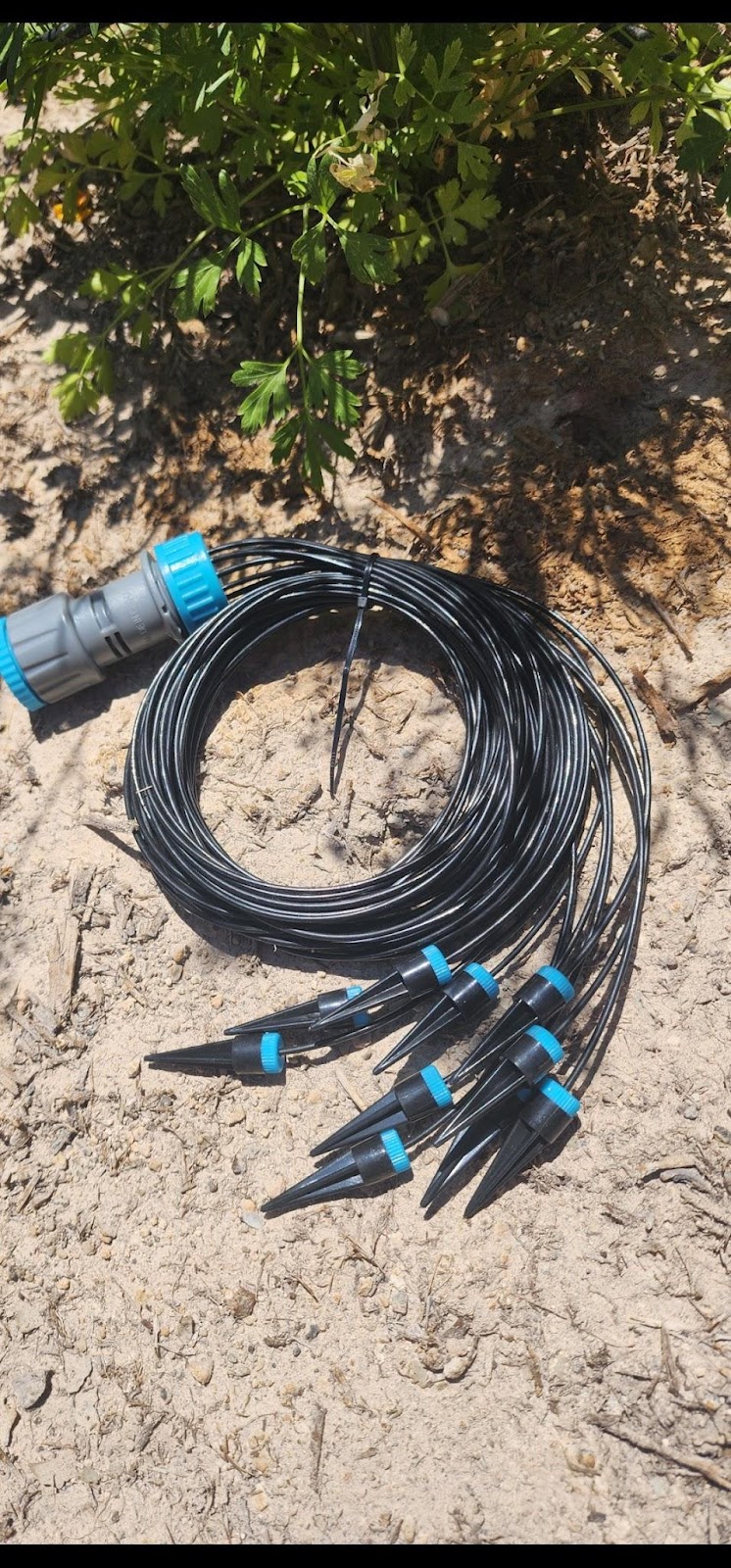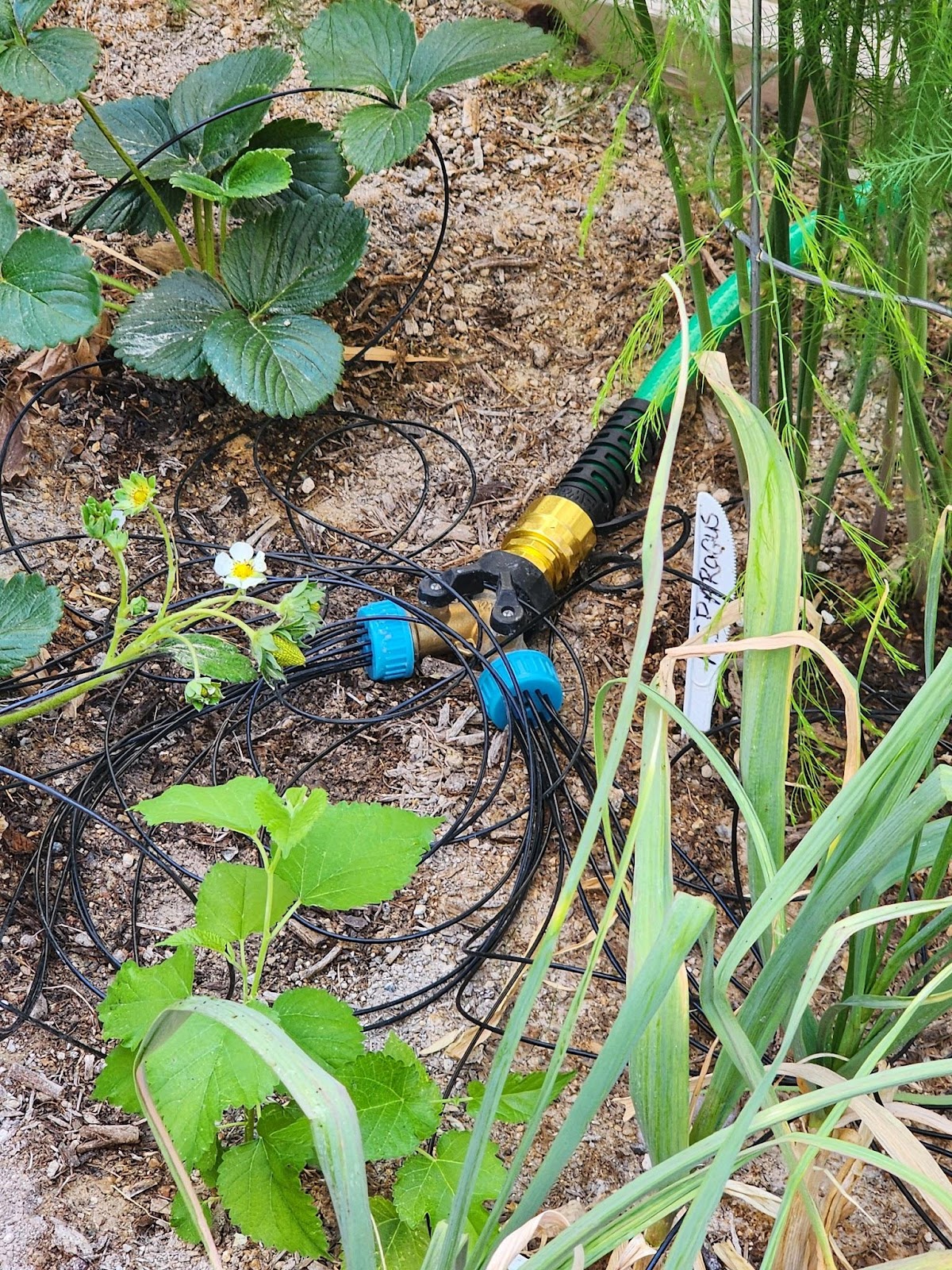
Here’s a drip water system made inside a Raised Garden which is an efficient and convenient way to ensure your garden thrives.
By delivering water directly to the roots of your plants, it minimizes water usage and promotes healthy growth.
Various drip systems are available, including automated with timers that work similarly to lawn sprinklers and manual systems that you control.
Manual systems are straightforward to install and require minimal maintenance.
Selecting The Right Drip System for Your Garden
Before you purchase your supplies, you’ll need to know what system type you will need. Plants can grow in a variety of climate zones, each with unique conditions that affect plant growth.
Here are some common climate zones: 1.**Desert**: Hot and dry with minimal rainfall. Plants adapted to this climate are often drought-tolerant and can store water, such as cacti and succulents.
2. **Tropical**: Warm and humid with abundant rainfall. This climate supports lush vegetation, including rainforests, with plants like orchids, ferns, and many types of fruit trees.
3. **Temperate**: Moderate temperatures with distinct seasons. This zone includes deciduous forests and supports a wide range of plants, including many garden vegetables, flowers, and trees like oaks and maples.
4. **Mediterranean**: Mild, wet winters and hot, dry summers. Plants in this climate are often drought-resistant, such as lavender, rosemary, and olive trees.
5. **Subtropical**: Warm with high humidity, and more rainfall than tropical climates. It supports a diverse range of plants, including palms, citrus trees, and various shrubs.
6. **Arctic/Alpine**: Cold with long winters and short growing seasons. Vegetation is limited to hardy plants like mosses, lichens, and low-growing shrubs.
7. **Continental**: Characterized by hot summers and cold winters. Plants in this climate need to withstand temperature extremes, such as prairie grasses and hardy perennials.
8. **Savanna**: Warm with distinct wet and dry seasons. This climate supports grasses and scattered trees, such as acacias and baobabs.
9. **Oceanic/Marine**: Mild temperatures year-round with high humidity and consistent rainfall. Plants like ferns, mosses, and evergreen trees thrive in this environment.
10. **Steppe**: Semi-arid with hot summers and cold winters. This climate supports grasses and shrubs adapted to dry conditions.
Each climate zone has unique characteristics that influence the types of plants that can grow successfully in those conditions.
Simplicity of Installing a Drip Water System in a Home Garden
In this article, we will focus on the simplicity of installing a drip water system in a home garden.
Once your garden layout is complete and seeds are planted, it’s time to install a system that saves you time, money, and water. Our goal is to use less water efficiently.
The best way to water plants, especially in hot, dry, or any climate zone, is to deliver water directly to the roots. This method ensures that plants receive the necessary nutrients for faster, stronger growth, and often remain disease-free.
To achieve this, you’ll need a drip system that directs water to the roots, avoiding unnecessary watering of other garden areas. This prevents water waste, which is important because many places have laws against overwatering and runoff, with hefty fines for violations.
Topsoil drip systems often cause overwatering because it’s easy to forget they are on. If you use a topsoil watering system, I recommend using a timer to control the water flow.
I’ve provided a link to Amazon for different Root Drip Systems. A good system delivers water directly to the root area, not the surrounding soil, ensuring plants get the nutrients they need.
This is one of the simplest devices to use. Just connect it to a hose or a two-way connector as shown in the image.


Place the other end next to the plant root and push the tip into the ground, water flows out of the sharp end.
Then, watch how much water is soaked around the plant and adjust the flow, using the manual valve to control the pressure and flows.
Here’s an added note: Consider the soil types in your garden. Besides the internet, I found valuable information on soil from the manufacturer’s package and by consulting with your local plant nursery for more details.
Attaching a Home and Garden Drip Irrigation
System


Each irrigation mainline drip system must be a closed loop, this will ensure that no backflow from the assemblies and help to prevent any contamination of the drinking water supply.
If for any reason these instructions are not clear you can visit Amazon Product image line, there you will find videos of how to install each drip system. I have provided a link to Amazon.
1. **Cutting the Drip Tubing**: – Use a tubing cutter to cut the drip tubing to your desired lengths.
2. **Connecting the Tubes**: – Push each drip tube into a connector.
- – Attach the connector to your pressure regulator or lateral line.
3. **Laying Out the Drip Lines**: – Lay the drip lines on the surface of your garden.
- – Do not bury the drip lines to avoid damage from rodents.
- – If you want to hide the drip lines, cover them with mulch after installation.
4. **Using Raised Beds or Home Gardens**: – For raised garden beds or home gardens, use a water hose with a two-way connector and a manual valve for easy water flow control.
5. **Control Valves**: – If you want to adjust or shut off individual drip lines, use a control valve before each drip line.
Conclusion:
Installing a drip water system in your home garden is an efficient and effective way to ensure your plants receive the precise amount of water they need directly at their roots.
By choosing the right system for your garden’s climate zone, using quality materials, and following a straightforward installation process, you can save time, reduce water usage, and promote healthier plant growth.
Whether you opt for a manual or automated system, the benefits of a drip irrigation system are clear. With proper installation and maintenance, your garden will thrive, and you’ll enjoy the rewards of a lush, vibrant outdoor space. Happy gardening!
